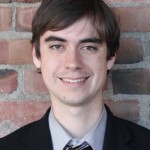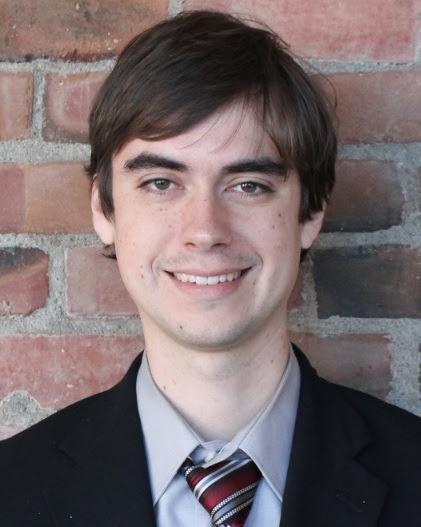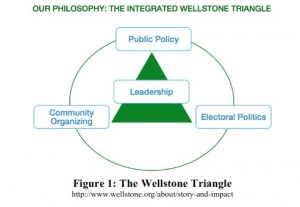by Sergio Costa
It was a sunny April weekend in Seattle when I arrived at the Wellstone Action conference. However, it was inside a windowless room that I learned the greatest contradiction of my trip: politicians are very good at their job. It’s just not the job you thought when you were electing them.
I was one of over a hundred people attending Camp Wellstone from April 25-27. Camp Wellstone is run by the non-partisan non-profit Wellstone Action, and serves as a premier training seminar for progressive candidates and organizers. Over the past 10 years, Wellstone Action has trained over 55,000 progressives, had over 600 alumni elected to office, and trained over 3,000 campaign leaders. Thanks to Bard College, I can now count myself among their number.
Wellstone Action trains progressives and potential candidates, ordering their priorities by the Wellstone Triangle (Figure 1). The Wellstone Triangle is Wellstone Action’s roadmap for progressive change and revolutionizing politics. Central to the Wellstone Triangle is leadership; each of the three points requires leaders to make happen, and each individual leg supports future leaders to sustain the movement. By focusing on community organizing, progressives can build the inspiration and energy needed to make progressive change. Electoral politics enables progressives to raise awareness of their issues and get representatives from their communities elected to office. After getting their representatives elected to office, communities can then affect public policy, which enables communities to enact lasting change.
To support each of these legs, Camp Wellstone had three tracks: Organizing a Political Movement, Organizing a Campaign, and Being a Candidate. I was trained on the being a candidate track, and it was here that I learned what candidates are really doing with their time. As someone who thought candidates spent most of their time with lobbyists and large donors, I was quite surprised.
The Candidate’s Job
The candidate only has two roles in the election: meet people and fundraise. Everything else is handled by their organizing staff. A candidate is expected to knock on doors to talk with all of their targeted voters multiple times in an election cycle. Despite time being the most limiting resource in an election, candidates are expected to spend the majority of it in one-on-one conversations with constituents. While this is powerful in theory, these conversations must be brief so that the candidate can meet with enough people before election day. This means that if you want your point to be heard, say it fast and clear, because the candidate won’t be there for long!
I had always thought fundraising was the responsibility of volunteers who had the manpower to make the calls, while the candidate worked on more important manners. However, it turns out a call from the candidate results in donations between 50-75% of the time, by far the most effective form of acquiring donations. With the amount of time devoted to this, it is no surprise that so many candidates seek out a few large corporate donors in an term papers election cycle. It is also hard to imagine how different elections would be if they were publicly financed, and the candidate need only focus on getting votes.
The Candidate’s Psychology
Since the candidate has to keep the energy of the campaign, candidates must:
-Always believe they are going to win, no matter how bleak the polls look
-Be able to respond immediately, at any hour, to a new campaign development
-Never let their self-confidence falter in public
Candidates that fail to have any of these qualities will lose supporters. People tend to spend their energy supporting candidates that might actually win, even if the candidate’s values don’t directly align with their own.
It is worth noting that few of these skills help directly with making good decisions in office. The people that pass the “interview process” for an elected office are very sociable, responsive, and good at hiring quality staff members. The candidate that has these qualities and good analysis and decision-making skills is rare indeed.
What’s Next?
As one of over a hundred potential candidates and organizers at Camp Wellstone, I got to see many people that have these qualities and more. The passion, drive, and desire for change among all of the participants was palpable and lit up the windowless rooms of the conference halls. It showed me how daunting the task before me and other progressive leaders that want to make change is, but it also showed me how simple the path ahead is as well.
I am grateful to both Wellstone Action and Bard College for giving me this opportunity to learn how to run campaigns and what is needed to be a candidate. I want to share this knowledge with all of you, especially the young people who are underrepresented in politics. I am working with Bard College’s C2C Fellows program to hold a national conversation called Beyond Cynicism in 2015. This conversation will serve to identify 100 youth that will run for Congress in 2018, inspiring leaders across the country and forcing a shift in politics and the way policy works. We can find the people that would serve as good Congresspeople and train them to run for office, instead of making Congressmen and women out of people that are good at running. In the middle of a system that many find hopeless, we can push people Beyond Cynicsm and find hope for the future.
 Sergio brings about measurable, positive impacts on campuses and communities. He is currently in charge of implementing Oakland Unified School District’s emPower program, which seeks to save energy use at schools through operational efficiency and student engagement. In collaboration with the C2C Fellows Network, Sergio plans to raise youth engagement in politics as well as address our government’s inaction by organizing a campaign to gather 100 youth to run for Congress in 2018. Sergio attended the C2C Fellows workshop at UC Berkeley in November, 2013.
Sergio brings about measurable, positive impacts on campuses and communities. He is currently in charge of implementing Oakland Unified School District’s emPower program, which seeks to save energy use at schools through operational efficiency and student engagement. In collaboration with the C2C Fellows Network, Sergio plans to raise youth engagement in politics as well as address our government’s inaction by organizing a campaign to gather 100 youth to run for Congress in 2018. Sergio attended the C2C Fellows workshop at UC Berkeley in November, 2013.


